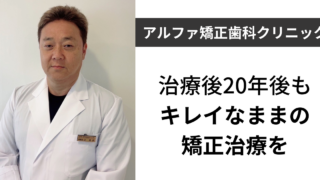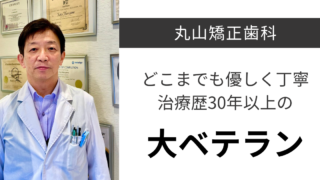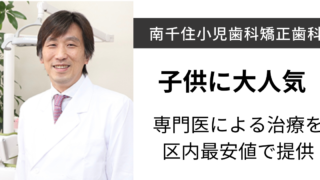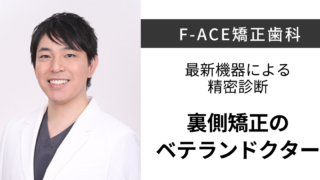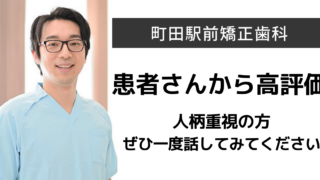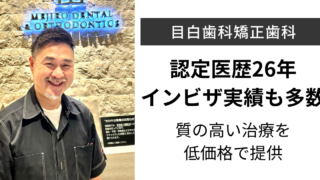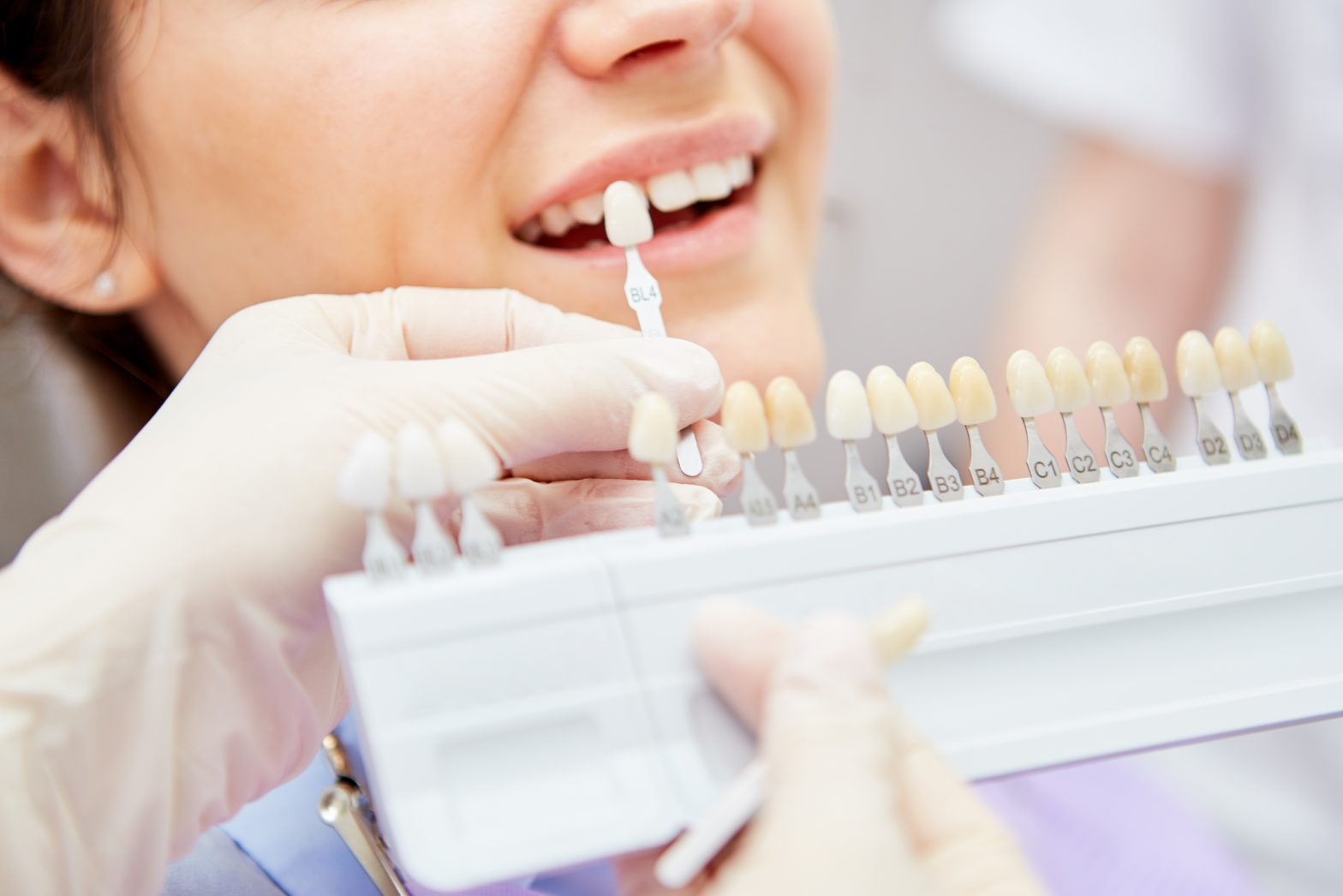
ホワイトニングはどのくらい効果がある?種類ごとに必要な回数や期間を説明!

歯のホワイトニングの効果は、どのくらいですか?

ホワイトニングにはいくつかの種類があり、効果が期待できるまでの施術回数や期間が異なります。
今回は、ホワイトニングの種類ごとに、必要な回数や期間を解説します!
ホワイトニングの効果|種類別に解説

歯の色素を分解する作用があるホワイトニングには、
- オフィスホワイトニング
- ホームホワイトニング
があります。
いずれも、ホワイトニング剤に過酸化水素や過酸化尿素が高濃度で含まれており、歯科医院のような医療機関でしか行えないホワイトニングとなります。
歯科医院で扱う、過酸化水素や過酸化尿素が高濃度で含まれているホワイトニング剤には、
- 歯の色素を分解して漂白する作用
- 歯の表面を曇りガラスのように変化させて白く見せる作用(マスキング効果)
によって、歯の表面の着色汚れを落とすだけでなく、歯そのものの色をトーンアップする効果が期待できます。
オフィスホワイトニングの効果
【効果が期待できるまでの回数と期間の目安】
・回数→1回以上
・期間→30〜60分前後(※)
※1回で効果を実感できる場合
オフィスホワイトニングは、歯科医師または歯科衛生士が施術するホワイトニングです。
歯にホワイトニング剤を塗り、その上から光を当てる工程を何度か繰り返します。
ホワイトニング剤の上から光を当てることで、歯の色素の分解を促進できるため、1回30〜60分前後の施術で効果を実感できることが多いです。
ただし、元の歯の色のトーンや歯の色味によっては、最低1週間の間隔を空けて2回以上オフィスホワイトニングを行わないと、あまり効果を感じないこともあります。(薬剤によっては、1日で繰り返して行えるものもありますので、間隔はホワイトニング剤やメーカーによります。)
複数回行う場合は、最低1ヶ月ほどの時間がかかります。
ホームホワイトニングの効果
【効果が期待できるまでの回数と期間の目安】
・回数→14回以上
・期間→2週間以上
※2週間以上、歯科医師の指示通りに毎日ホームホワイトニングを行った場合
※効果が出るまでの回数や期間は、ホワイトニング剤の濃度や種類、歯科医師の指示により異なる場合があります。
ホームホワイトニングは、歯科医師から処方されたホワイトニング剤を注入したマウスピースを装着して行うホワイトニングです。
ホワイトニング効果を得るには、歯科医師の指示通りに、ホワイトニング剤を入れたマウスピースを装着する必要があります。
メジャーな方法だと2週間以上、毎日2時間ホワイトニング剤を入れたマウスピースを装着する必要があるため、ホワイトニング効果を実感するまでに、比較的時間がかかります。
しかし、時間がかかる分、歯の色が後戻りしにくく、マウスピースの作成とホワイトニング剤の処方を受けたら、あとはすべて自宅で行えるため、歯科医院に通う回数や手間が少なく済みます。
また、診察からマウスピースの作成、ホワイトニング剤の処方まで、すべてオンラインで完結するホームホワイトニングの場合は、通院回数が0回で済みます。
近年増えている手軽に手に入るホームホワイトニングの中には、過酸化尿素や過酸化水素が成分に入っていないものもあります。
その場合は歯科医院で処方されるホームホワイトニング程の効果は期待できないでしょう。
歯の状態によるホワイトニング効果の違い|画像付きで解説
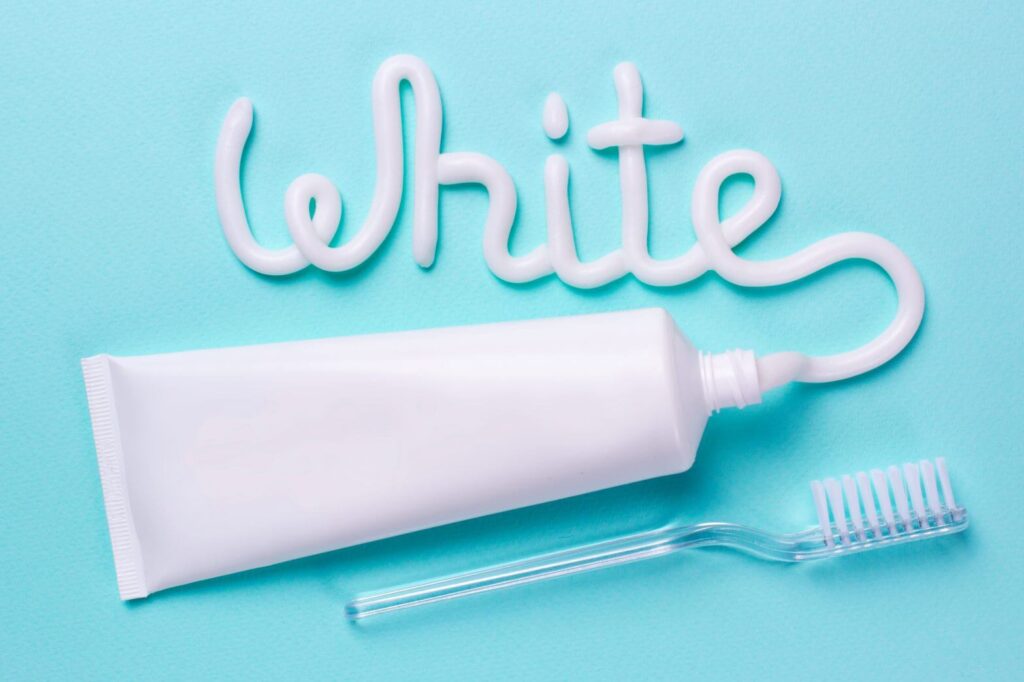
ホワイトニングの効果は、元の歯の状態によって異なります。
- 効果が出やすい歯
- 効果が出にくい歯
- 効果が期待できない歯
があるので、画像付きでご紹介します!
効果が出やすい歯
ホワイトニングの効果が出やすい歯は、
- 遺伝的に黄味が強い色の歯
- 食べ物や飲み物などで黄ばんだ歯
です。
ホワイトニングは、歯のまわりを覆うエナメル質の色素を分解して歯の色をトーンアップさせます。
そのため、遺伝や食べ物や飲み物などの影響で、エナメル質が黄色くなっている歯は、ホワイトニングの効果が出やすいです。
遺伝的に黄味が強い色の歯

歯の色は人によって異なり、遺伝などの影響で生まれつき歯が白い人や、黄味が強い人などがいます。
遺伝的にエナメル質の黄味が濃い人は、エナメル質の色素が分解されれば歯の色がトーンアップするので、ホワイトニングの効果を実感しやすいです。
食べ物や飲み物などで黄ばんだ歯
食べ物や飲み物などの色素が定着して、歯が黄ばんでくることがあります。これは、飲食物による外部からの影響で歯が黄ばむことから「外因的着色」といいます。
タバコのヤニによる黄ばみも外因的着色のひとつです。
外因的着色も、遺伝的に歯の黄味が強い場合と同様に、歯の表面に着いた色素がエナメル質に染み込んで黄ばみを引き起こしているため、ホワイトニングで白くなりやすい歯です。
効果が出にくい歯
ホワイトニング効果が出にくい歯は、
- 象牙質の変色が起きている歯
- 色ムラがある歯
です。
象牙質の変色が起きている歯
象牙質の変色により、歯の色が黄ばんだり変色したりする歯には、以下のようなものがあります。
- 加齢変化により黄ばんだ歯
- テトラサイクリン歯
- 神経の死んだ歯
象牙質とは、エナメル質の下にある象牙色の層のことです。
象牙質の色が濃かったり変色していたりすると、半透明のエナメル質から色が透けてみえるため、歯の色が黄ばんだり、変色したりします。
ホワイトニングによって、エナメル質を磨りガラス状にするマスキング効果が働くので、象牙質の変色が軽度であれば、象牙質の色が透けにくくなり、歯を白く見せることはできます。
しかし、象牙質の変色が強いと、マスキング効果が働いても、あまり歯が白く見えないと感じることがあります。
加齢変化により黄ばんだ歯
歯は加齢変化によってエナメル質が薄くなり、象牙質の黄味が濃くなります。これにより、歯が黄ばんで見えます。
テトラサイクリン歯
テトラサイクリン歯とは、歯の形成期である0〜12歳ころに、風邪薬のシロップなどに多く使われていた「テトラサイクリン系」の抗生物質を大量に摂取することで変色した歯のことです。
歯の形成期に象牙質に沈着したテトラサイクリン系抗生物質の成分が、歯が生えたあとに太陽の紫外線に反応することで、象牙質をグレーや紫、茶褐色に変色させたり、濃い縞模様やグラデーションを作ったりします。
変色度合いが軽度なら改善できる可能性はありますが、グレー系や紫系の歯の色はホワイトニングで白くなりにくいことに加えて、縞模様や歯面のグラデーションが残るため、ホワイトニングの効果は出にくいでしょう。
神経の死んだ歯

歯の神経が死んでしまうと、象牙質が茶色く変色していきます。
神経の死んだ歯は、ホワイトニングでエナメル質の色素を分解しても、象牙質の色は変わらないため、ホワイトニングの効果が期待しにくいです。
色ムラがある歯
- 歯の根元に向かって黄ばみが強くなって、歯にグラデーションができている
- ホワイトスポットにより部分的に白い部分がある
- ほかの歯よりも犬歯だけ黄ばみが強い
など、もともと歯の色にムラがある場合は、ホワイトニングをしても歯が均一な色にならないことがあります。
効果が期待できない歯
以下のような状態の歯は、ホワイトニングの効果が期待できません。
- 人工の歯・詰め物の変色
- 溶け出した金属イオンの沈着による変色
- 虫歯による変色
- エナメル質・象牙質形成不全の歯
人工の歯・詰め物の変色

ホワイトニングは、歯のエナメル質の色素を分解するものなので、人工の歯や詰め物を白くすることはできません。
溶け出した金属イオンの沈着による変色
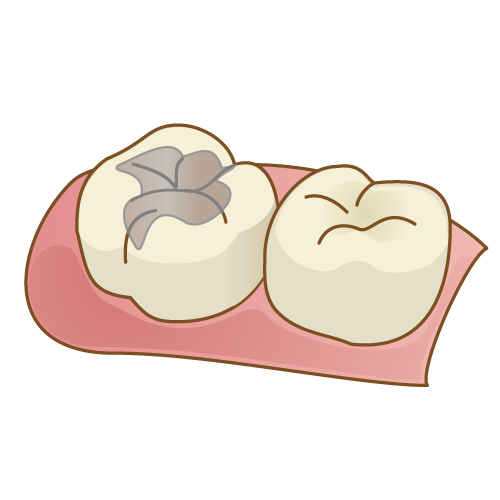
詰め物や被せ物に金属が使われている場合、黒色の金属イオンが溶け出して、歯や歯茎に沈着することがあります。
金属イオンによる着色も、ホワイトニングで白くすることはできません。
虫歯による変色
虫歯になると、歯が茶や黒に変色することがあります。
虫歯による歯の変色は、虫歯治療でしか治せないため、ホワイトニングの効果は期待できません。
エナメル質・象牙質形成不全の歯
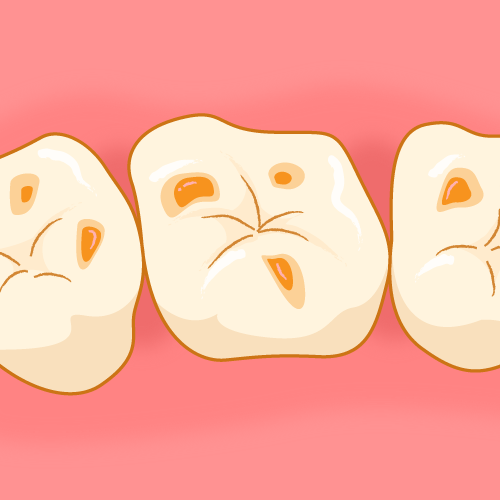
エナメル質や象牙質の形成不全とは、歯の形成が上手くできておらず、歯の表面が粗雑になったり、透明感のない白色になったりするものです。
重度の場合は、クレーターのようになってしまうこともあり、ホワイトニングの効果が期待できないことが多いです。
ホワイトニングの効果は種類や歯の状態で異なる
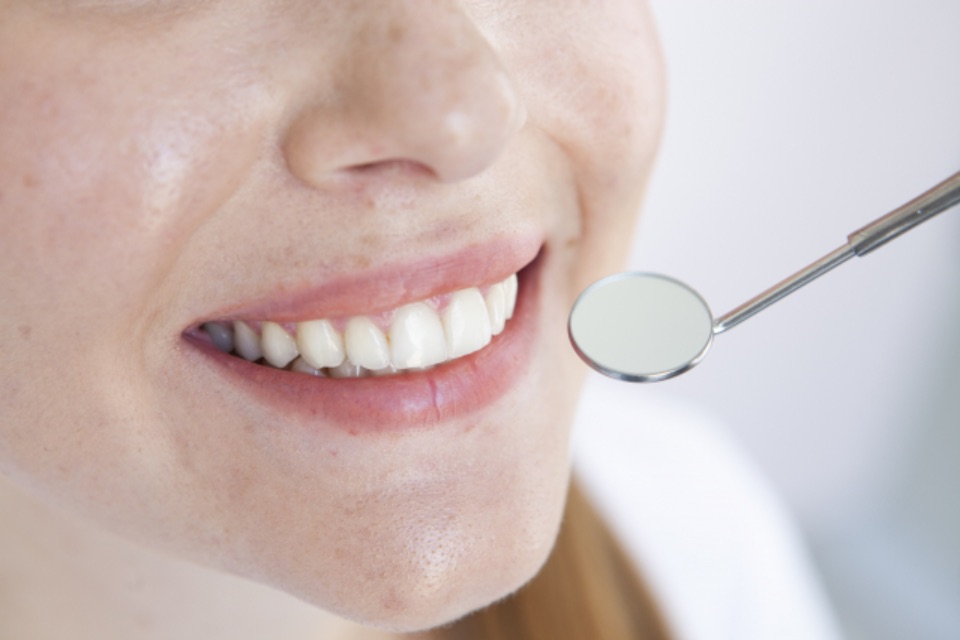
歯の色素を分解する作用があるホワイトニングには、オフィスホワイトニングとホームホワイトニングがあり、効果が期待できるまでの施術回数や期間が異なります。
また、歯の状態によってもホワイトニングの効果の出方が変わるため、歯を白くしたい場合は、適切な方法を歯科医師に相談するのがベストです。
365dentistでは、気軽にお口の悩みを相談できる歯科医師運営のオープンチャットを開設しております!
お口の悩みを解決したい方は、ぜひ遊びに来てください!
関連記事:【歯科医師監修】ホワイトニング効果のある歯磨き粉5選
関連記事:歯医者さんで行うホワイトニングの種類、どれがいいの?
関連記事:ホワイトニングの費用はどのくらい必要なの?矯正中でもホワイトニングできるって本当?
365dentist総監修 歯科医師/勝屋友紀子
長崎大学歯学部卒業、〜2018 九州医療センター、2018〜現在 都内歯科クリニック勤務
監修 歯科医師/Naomi
臨床研修終後、都内審美歯科勤務。現在は歯科医師/歯科ライター


